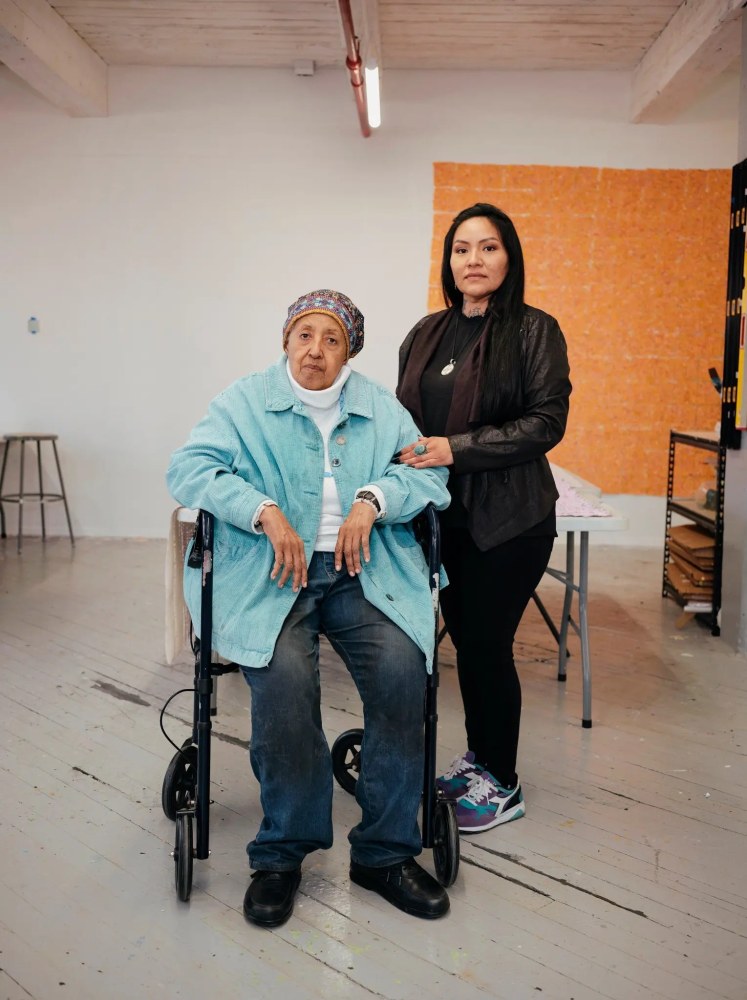
From left: Howardena Pindell, 80, painter, and Melissa Cody, 40, textile artist, photographed at Pindell’s studio in Port Morris, the Bronx, on Feb. 3, 2023.
Howardena Pindell: Melissa uses the techniques of traditional Navajo weaving, but then she does something that I can’t even imagine being able to do: She weaves intuitively, so the pattern is born as she works. My art has a lot of minutiae, like hers, and another connection is that the pieces she makes are often associated with Germantown Revival-style blankets [originally woven from yarn sent from mills in Germantown, Pa., to the Navajo reservations in the mid-19th century]. I grew up in Germantown during Jim Crow. It was not what you’d call an ideal place to be if you were of color.
Melissa is someone whose ancestors, whose nation, have been through hell. It was much worse than the plight of Black people in Germantown. It was actually Asiba Tupahache, a member of the Matinecoc Nation and activist from Long Island, who unlocked the part of my brain that was speechless but still feeling the hurt of racism. Hearing her speak the way she did about how Indigenous people were treated helped me find my own voice.
Melissa Cody: I started looking at Howardena’s paintings because the color theory behind her compositions is just so eye-catching and evokes so much emotion. I was really grasping for how to incorporate layers of emotion through color in my own textiles. I work on a traditional Navajo loom, so once a piece is complete, I can’t go back and remake it. It’s in its final state. I really appreciate Howardena’s work because it also has that sense of completion and finality. You can see when she’s able to call her piece finished.
I’m a fifth-generation textile artist. My career has been fostered not only by my relatives — my aunts, my mother, my grandmothers and my great-grandmothers — but also by other women who’re weavers in the Navajo Nation. Learning from family, you feel the ambience of such a wealth of knowledge. I was very, very lucky to have been around that. Now, my generation is taking weaving to the next path — bringing it into a fine-art setting, and also using it as a tool to teach our people’s history.
–Sandra E. Garcia